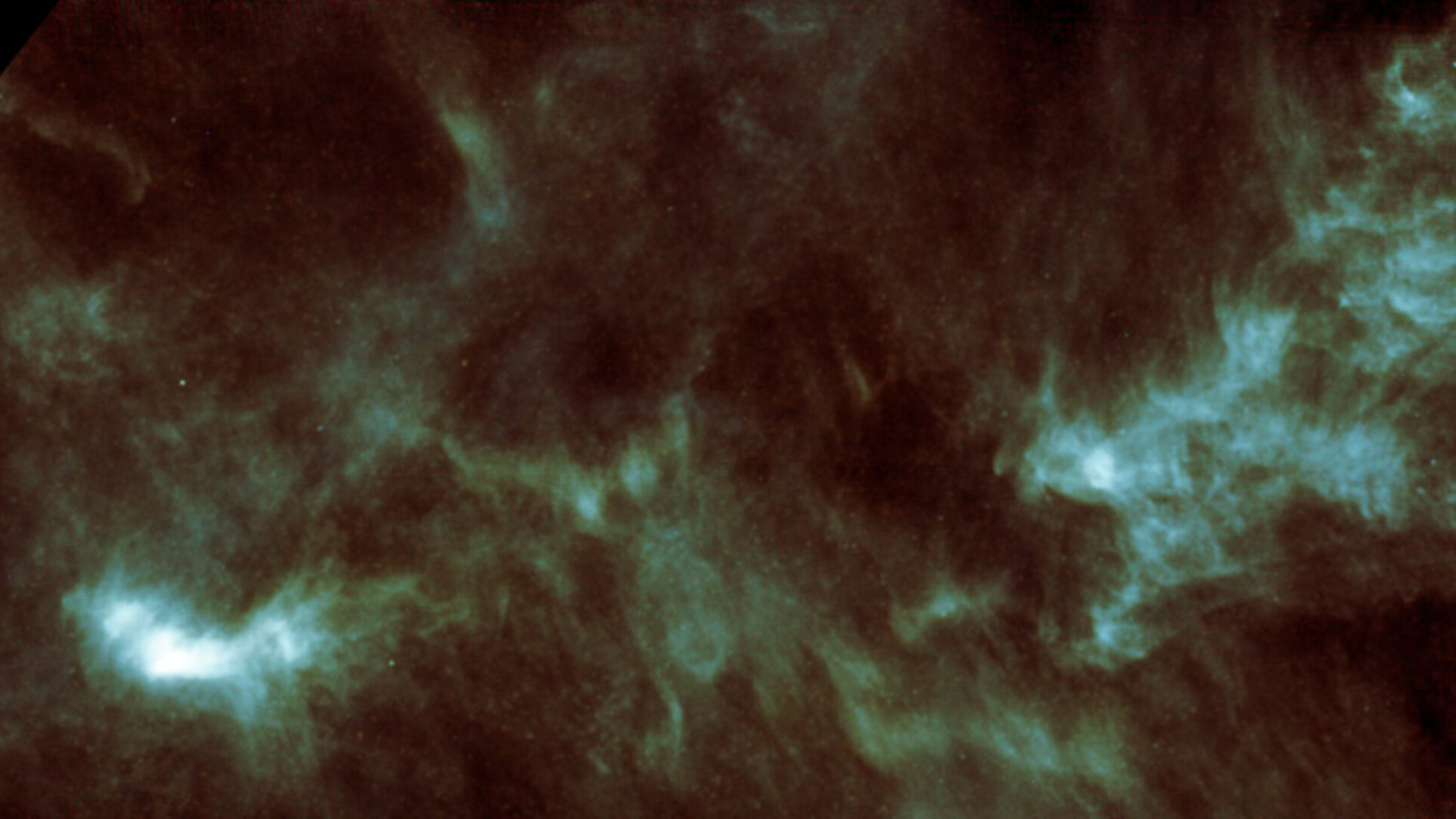
In the Taurus molecular cloud, one of the closest stellar nurseries to Earth, scientists found two nitrile-containing molecules — and this is incredibly interesting because these very molecules could reveal information about the origins of life as we know it in the universe.
The Taurus molecular cloud (TMC-1) is an interstellar cloud in the constellations Taurus and Auriga, and the newly discovered molecules within are known as malononitrile and maleonitrile. The molecules were detected using data from the ongoing QUIJOTE line survey of TMC-1 that is being carried out with the Yebes Telescope in Spain. And, in short, their presence suggests there are complex chemical processes taking place in space — processes that may hold clues to the truth of how life began.
"Dinitriles, like malononitrile, have been recognised as precursors in the prebiotic synthesis of purines and pyrimidines, which are at the heart of RNA and DNA," explained Marcelino Agúndez Chico, a researcher at the Instituto de Física Fundamental (CSIC) in Madrid, Spain, told Space.com. "The more we investigate, the more we realize that molecular clouds are able to synthesize prebiotic molecules."
Recent years have seen an exciting phase in astrochemistry, where new observational techniques and advanced telescopes have allowed scientists to discover a surge of new molecules in space with surprising complexity. "There seems to be no limit for the degree of chemical complexity that interstellar space is able to fabricate," said Agúndez. "Cold interstellar clouds are no longer considered inert places but very active chemical laboratories."
Among all common types of molecules are those that contain the nitrile group, which is made up of triple-bonded carbon and nitrogen atoms. These kinds of molecules are, in fact, notably abundant. "The nitrile group is terribly stable," said Agúndez. "Carbon and nitrogen are kept together by a triple bond, which turns out to be one of the strongest chemical bonds in nature."
However, interstellar chemistry differs from the chemistry that takes place on Earth, where reactions typically lead to the most stable products. In space, which is a cold, low energy environment, the outcome of chemical reactions is governed more by either speed or simply the likelihood of a reaction taking place rather than by stability. This means that reactions that happen quickly, even when they don't lead to the most stable products, tend to dominate over slower reactions.Nitriles in general are very prevalent in space, which tells us that they are not only easy to form but also that they're very resilient to destruction.
That stability, combined with their likelihood of formation, actually makes nitriles more abundant than other molecular types that may decompose or react away more easily.
To connect the newly discovered nitrile molecules to the chemistry that may have sparked life on Earth, astrochemists need to identify the interstellar reactions that produced them. Therefore, Agúndez and his colleagues searched for other molecules that might have served as starting materials for the two nitriles they detected, offering potential insights into the reaction pathways involved in their formation.
Here's what they found.
The team reports that malononitrile and maleonitrile were eight and three times less abundant in the TMC-1 cloud, respectively, compared to similar molecules in which one of the nitrogen triple bonds is replaced with a carbon-carbon triple bond.
A possible reactive species known as a “radical,” that may lead to the production of both the molecules containing the carbon-carbon triple bond as well as malononitrile and malononitrile, was also measured to be about ten times more abundant in its carbon form compared to nitrile radicals. "[The carbon-carbon triple bond] is very difficult to break once formed, and TMC-1 is rich in hydrocarbons,” said Agúndez. It is therefore not surprising that the carbon-based molecules are more abundant than the nitrile-based ones.
The team was able to propose a reaction pathway for the production of maleonitrile using chemical modelling. However, the researchers hit a wall with malononitrile: they couldn't prove how it was being formed in the cold interstellar cloud.
This is related to a challenge facing the field, says Agúndez — namely, that the pace of newly discovered molecules is outstripping the ability of existing models to explain how they form. For example, maleonitrile is currently not included in chemical databases.
"The enormous rate at which molecules are being discovered in space [over the last] three years or so cannot be digested by chemical models," explained Agúndez. "Many of the molecules discovered are not even included in the reaction networks used in astrochemistry. In order to understand how they are formed, we need to investigate many new reactions."
Agúndez says they are currently working on a solution, which they will publish in a future study. However, the data collected here, as well as from other exploratory studies, is helping to build a growing platform of knowledge that scientists will be able to use to piece together the mystery of life in the universe — and maybe even one day find it elsewhere.
"The data we have for other clouds is not as sensitive, but there is no reason to think that TMC-1 is special," said Agúndez. "It is very likely that the chemistry we are discovering in TMC-1 occurs also in many other molecular clouds across our galaxy.
"The fact that we now know that they are abundant in interstellar clouds provides an additional piece to the puzzle of the prebiotic molecules that we certainly know are synthesized in interstellar space," he concluded.







